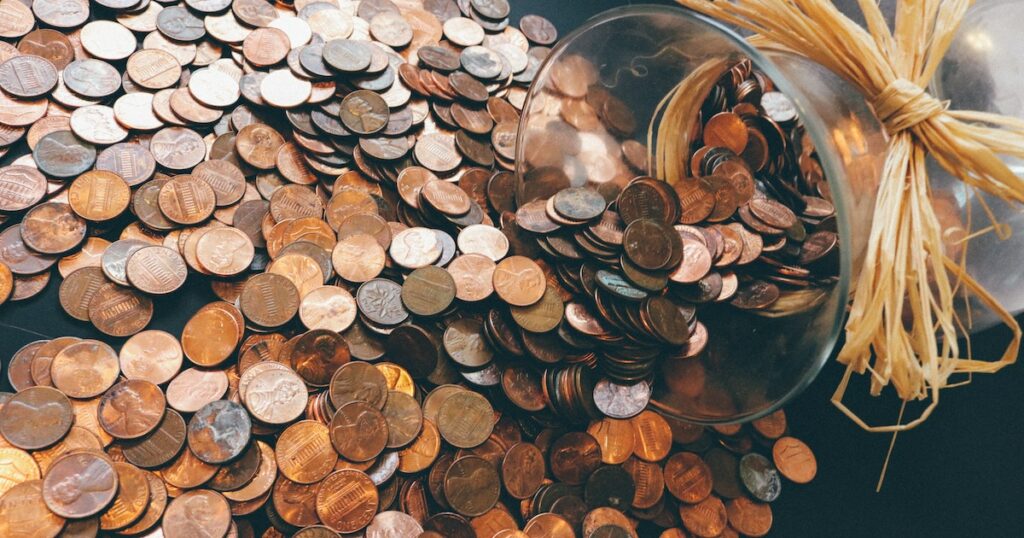The stablecoin (stable cryptocurrency) DAI was launched in 2017 through the decentralized platform Maker, a network of smart contracts that runs on the Ethereum blockchain and works to guarantee the stability of the value of the cryptocurrency DAI always close to US$ 1.
Briefly, this balancing is accomplished by a dynamic system of secured debt positions (or CDPs), which are autonomous feedback mechanisms that use external agents. By the end of 2022, DAI was one of the top 15 digital assets, with a market capitalization of over $5 billion.
How does the stablecoin DAI work?
The functioning of the DAI cryptocurrency is facilitated by the decentralized platform Maker, which uses stabilization mechanisms based on smart contracts and lending baskets.
In this way, all DAI and Maker structures are based on the blockchain technology of the Ethereum network, making the stablecoin truly reliable and decentralized, and cannot be censored or altered.
Why did DAI invest resources in fixed income?
The impetus for investment appears to be an effort to diversify the billions of dollars in trust funds, while finding ways to make those deposits generate returns.
Currently, most DAI pools managed by the Maker protocol are tied to USDC Coin (USDC), a centralized stablecoin that offers no return on investment.
“Generating income on MakerDAO’s asset reserves enables the enhancement of the protocol’s capabilities and the ability to secure capital investment,” the organization said in a statement.
Centralization risks when holding USDC in treasury
In August 2022, MakerDAO founder Rune Christensen proposed reducing exposure to the stablecoin USDC due to concerns surrounding its issuer, US payments company Circle.
That month, the US Treasury Department sanctioned a list of wallet addresses associated with the Tornado Cash coin source concealment tool. Circle then voluntarily chose to freeze the USDC associated with these blacklisted wallets as a precautionary measure.
Christensen called the behavior inconsistent with MakerDAO’s ethos of decentralization.
Investing in debt securities
In the absence of decentralized options that bring some form of return to DAI holders, the decentralized autonomous organization MakerDAO has voted to have the funds go into real assets guaranteed by the US government.
The move brought fierce criticism from one of the oldest entrepreneurs in the cryptocurrency ecosystem, Eric Vorhees, who said: “Lending money to a murderous empire is not a good idea for a cryptocurrency project. We need to do better than that.”
MakerDAO, the protocol behind stablecoin DAI, used $500 million of its reserves to purchase US Treasuries and short-term corporate bonds.
Why did DAI change course?
The shift to low-risk bonds signals MakerDAO’s intention to diversify its balance sheet in the face of rising interest rates. The decentralized finance (DeFi) lending protocol seeks to expand its exposure to increase the yield earned by its investors.
The decision to leverage DAI beyond the cryptocurrency ecosystem was put to a vote in June by holders of the Maker Protocol governance token, MKR.
US government debt accounts for 80% of the $500 million fund, with the remaining 20% going to high investment grade corporate bonds.
Stakeholders voted through an executive proposal, known as MIP65, to allow management of the bonds through asset advisor DeFi Monetalis, Swiss digital asset bank Sygnum, and international asset manager Baillie Gifford.
What changes in the price of the stablecoin DAI?
Anything. The DAI holder will hardly notice any difference in the stablecoin quotation, which remains very close to US$ 1. The fact that Maker opted for traditional fixed income does not affect the automatic rebalancing operation.
MakerDAO’s latest investment strategy hopes to increase protocol revenue and diversify its asset base, seen as necessary for expanding DAI supply as its adoption grows.


